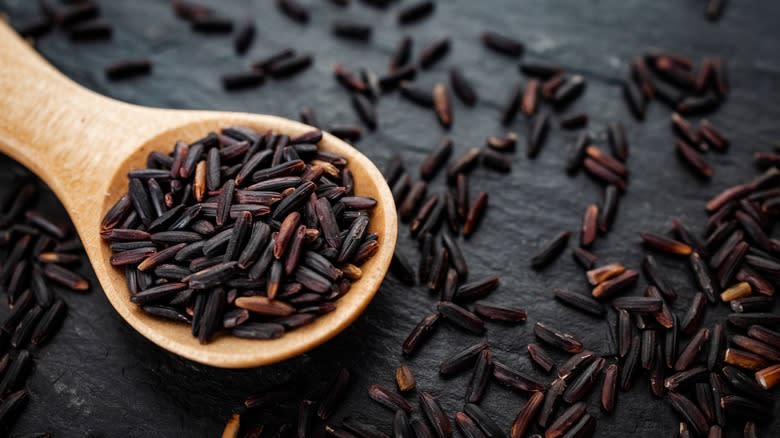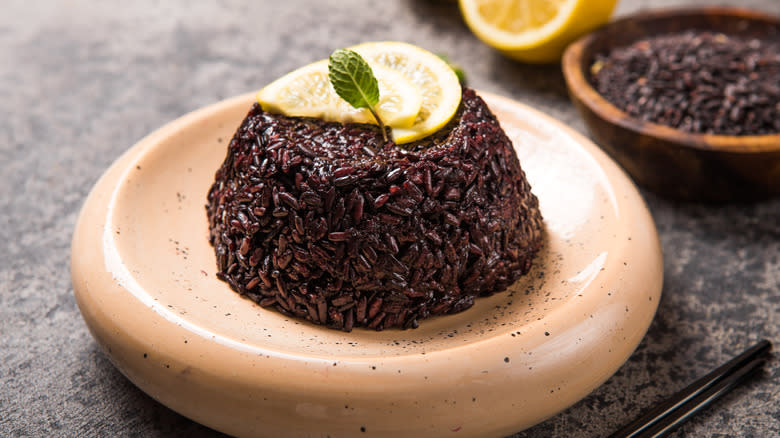The Royal Origins Of Forbidden Rice

It's common wisdom that if you tell someone not to do something they're more likely to do it. It's the entire ethos behind, "Don't think of a pink elephant." So when you hear about forbidden rice, odds are you're like us, and your curiosity is piqued. Forbidden rice goes by many names – black rice, Emperor's rice, forbidden black rice. Whatever your name of choice, forbidden rice is downright delicious and chock-full of antioxidants. It's got a deliciously meaty body and the flavor is so uniquely nutty and fantastic that it would honestly be good even if served by itself.
That's probably why ancient Chinese emperors decreed that only they and other royalty could eat it. It was forbidden to commoners, hence the alluring title. The Chinese believed that forbidden rice promoted the Emperor's longevity and vitality, and they were right. The marketing wizards of today would call it a superfood, the Chinese royalty called it a medicinal delicacy.
They didn't have the technology that we have today that lets us identify just what in forbidden rice is so healthy, leaving some scholars curious as to why they may have come to that conclusion. Modern nutritional science has identified the pigment that makes forbidden rice black as anthocyanin, which is known to be anti-inflammatory and has other health benefits, especially for the heart. Whether it was a lucky guess or noble wisdom, the modern world is quickly learning why the Emperor didn't want to share this delicious grain.
Read more: 21 Delicious Ways To Use Up Leftover Rice
Forbidden No More

The history of forbidden rice becoming available to the public is shrouded in mystery. This is ancient history we're talking about after all. However archaeobotanical research suggests that black rice slowly made its way out of China over the past 2,000 years. Although it has been in the Chinese region for 10,000 years, it wasn't cultivated until roughly the year 150 BC. After the Emperor declared black rice as forbidden, people would offer the grain as a tribute to the noble court.
Black rice is a notoriously low yield grain, with only a 10% yield, making it an expensive luxury to produce. This may have helped keep forbidden rice out of the public diet for centuries since no one would have been able to afford it even if they had been allowed to. But even if it wasn't eaten by commoners it was grown by them and black rice slowly made its way into Indonesia, the Philippines, India, and Thailand over the coming centuries. And today we see variations of black rice globally.
Although brown rice is often chosen for its health benefits, black rice easily beats it in pure nutritional value. Much of the benefit comes from the anthocyanin pigments. Forbidden rice is a popular style of black rice, but all black rice is richer in protein, iron, and fiber than the brown, white, or red rice varieties. Next time you have the opportunity to dine like an emperor, we suggest you take it.
Read the original article on Tasting Table.

